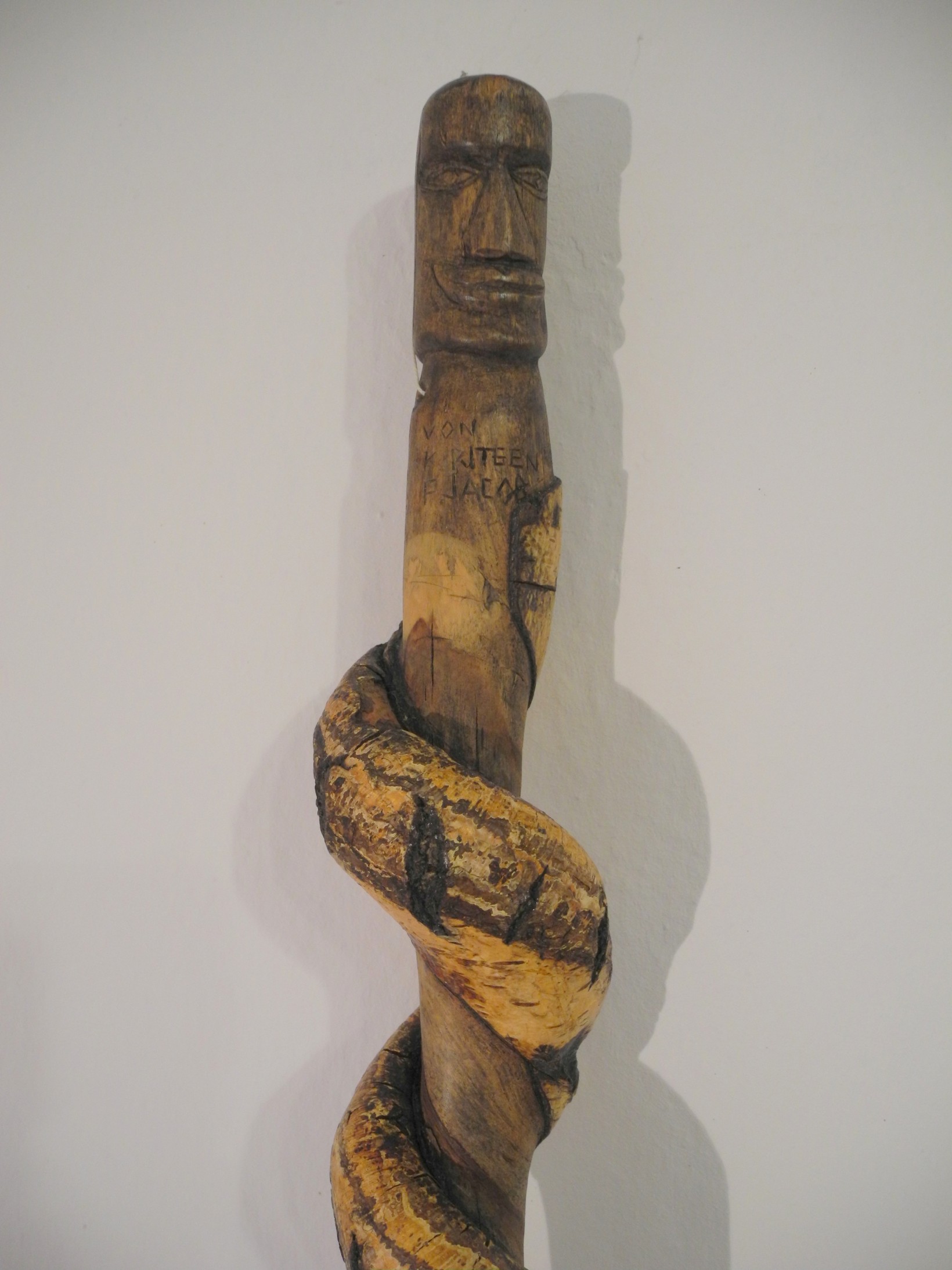"This is short, this is long, this is the Kashubian capital" („To je krótczi, to je dłëdżi, to kaszëbskô stolëca”) – residents of Pomerania or those interested in its culture will certainly have no trouble identifying the source of this quote. It comes, of course, from "Kaszubskie nuty", also known as the ABC or Kashubian Alphabet, one of the most recognizable elements of Kashubian folklore. Later in the song, there is a line: "This is a yoke, this is an ox, this is whole, and this is half" („To je klëka, to je wół, to je całé, a to pół”). The Kashubian word klëka refers to a yoke, a harness put on draft cattle, but as a visit to the Museum of Central Pomerania in Słupsk shows, that's not its only meaning.
In Słupsk, one can see a klëka (also known as kluka, krzëwi sãk, or kòzeł) on permanent ethnographic display at the Castle Mill. It is seventy centimeters long and is made from a spirally twisted piece of birch wood. It's a stick with several mysterious inscriptions carved on its surface ("EBBA", "van K. Ritten", "Jakob"), finished with a knob shaped like an elongated human head.
Klëkas came in various sizes and shapes, they could be very twisted, sometimes carved, resembling a goat or snake. They all had one thing in common - their function. The klëka was an attribute of the village leader's power; he used it to summon villagers to meetings. The idea was simple, though hard to imagine and implement today – the leader would put a note with the date and place of the meeting in a groove carved into the stick, then pass it to the nearest household. Every member of the community had the duty to pass the klëka to their neighbor, ensuring everyone was informed about the event (the stick had to return to the leader).
In Kashubia, there was also a tradition of walking from house to house with a klëka tied with a black ribbon. It then became an invitation to the "empty night", the last evening before a funeral, during which the deceased's relatives would pray the rosary together and sing mourning songs for several hours (or until morning).
Today, the klëka is sometimes jokingly referred to as the "Kashubian SMS."
Location: Koszalin
Date of creation: 20th century
Author's name: unknown
Distinctive features: A stick made from a spirally twisted piece of birch wood, finished with a knob shaped like an elongated human head; on one side inscription "EBBA", on the other "van K. Ritten", below: "Jakob"; length: 70 cm
Compiled by: Agnieszka Domańska
I would like to thank Ms. Dominika Gonciarz from the Workshop of Folklore, Art, and Crafts of the Museum of Central Pomerania in Słupsk for sharing information about the exhibit.
Sources:
F. Lorentz, Kaszubi: Folk Culture and Language, Toruń 1934.
http://belok.kaszubia.com/czekawostczi/znajeta-tak-co-kleka

